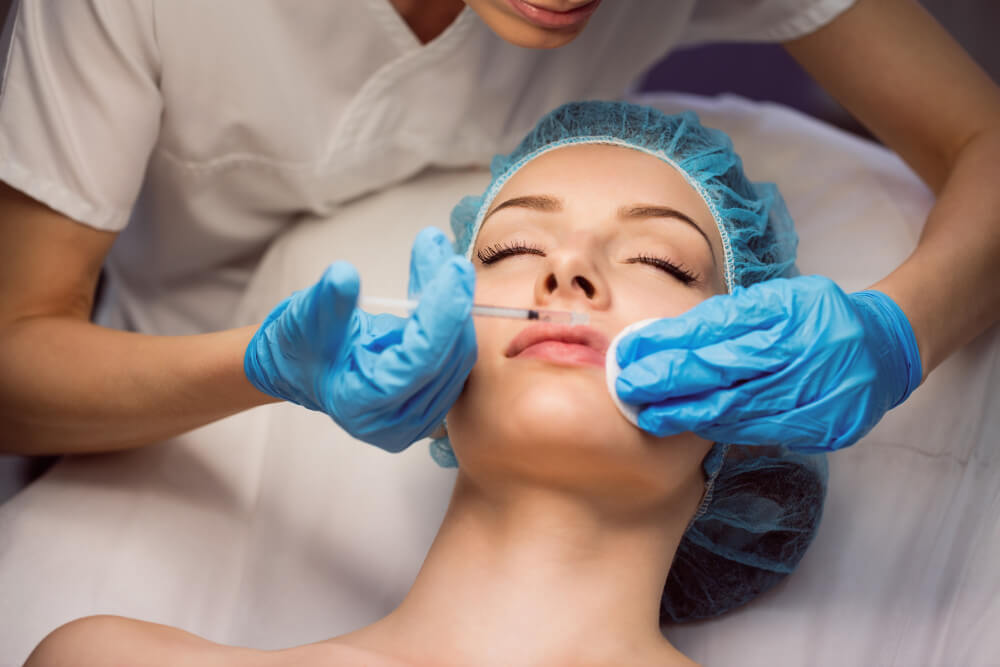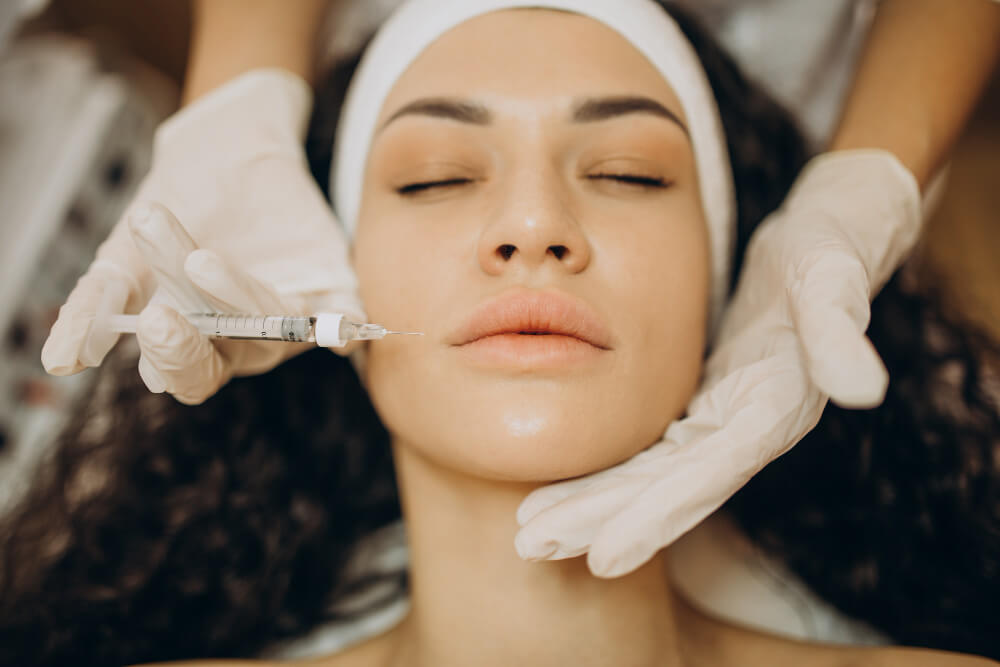Unlocking the Fountain of Youth: Exploring Dermal Fillers and Facial Rejuvenation
In the quest for eternal youth and beauty, the field of cosmetic dermatology has witnessed remarkable advancements. Among these, dermal fillers have emerged as a popular and effective tool for facial rejuvenation. With the ability to smooth wrinkles, restore volume, and enhance facial contours, dermal fillers offer non-surgical solutions to combat the signs of aging. This comprehensive guide explores the world of dermal fillers, their applications, benefits, and the array of treatment options available for facial rejuvenation.
Understanding Dermal Fillers
Dermal fillers, also known as soft tissue fillers or injectable implants, are gel-like substances injected beneath the skin to restore lost volume, smoothen wrinkles, and enhance facial features. These fillers are composed of various materials, including hyaluronic acid, calcium hydroxylapatite, poly-L-lactic acid, and polymethylmethacrylate (PMMA). Each filler type offers unique properties and longevity, catering to diverse patient needs and preferences.
Types of Dermal Fillers
- Hyaluronic Acid Fillers: Hyaluronic acid (HA) fillers are among the most popular choices due to their natural compatibility with the skin. Brands like Juvederm and Restylane utilize HA to plump lips, fill nasolabial folds, and restore facial volume. HA fillers are versatile, reversible, and typically offer immediate results with minimal downtime.
- Calcium Hydroxylapatite Fillers: Calcium hydroxylapatite (CaHA) fillers, such as Radiesse, stimulate collagen production while providing long-lasting volume enhancement. They are ideal for addressing deeper wrinkles, volumizing cheeks, and improving facial contours. CaHA fillers offer results that can last up to a year or more.
- Poly-L-Lactic Acid Fillers: Poly-L-lactic acid (PLLA) fillers, like Sculptra, work by stimulating collagen synthesis over time, leading to gradual improvement in skin texture and volume. These fillers are suitable for treating facial hollows, wrinkles, and restoring youthful facial contours. The results of PLLA fillers can last for several years.
- Polymethylmethacrylate Fillers: Polymethylmethacrylate (PMMA) fillers, such as Bellafill, contain microspheres suspended in a collagen gel. They provide long-lasting volume correction by supporting collagen production and tissue regeneration. PMMA fillers are effective for treating acne scars, smile lines, and augmenting facial features.
Facial Rejuvenation: Treatment Options
- Cheek Augmentation: Dermal fillers can restore lost volume in the cheeks, creating a lifted and youthful appearance. By strategically injecting fillers along the cheekbones, dermatologists can enhance facial contours and improve overall symmetry.
- Lip Enhancement: Fuller lips are a hallmark of youth and beauty. Dermal fillers offer a safe and effective solution for augmenting lip volume, defining the lip borders, and reducing the appearance of fine lines around the mouth.
- Nasolabial Fold Reduction: Nasolabial folds, also known as smile lines or laugh lines, deepen with age, contributing to an aged appearance. Injectable fillers can soften these folds by replenishing lost volume, resulting in smoother and more youthful-looking skin.
- Under Eye Hollows Treatment: The delicate skin under the eyes is prone to hollowing and dark circles as we age. Dermal fillers can add volume to the tear trough area, reducing the appearance of shadows and creating a refreshed and rejuvenated look.
The Treatment Process
- Consultation: The journey begins with a comprehensive consultation with a qualified dermatologist or cosmetic surgeon. During this appointment, the patient’s concerns, aesthetic goals, and medical history are discussed.
- Treatment Plan: Based on the individual’s unique facial anatomy and desired outcomes, a personalized treatment plan is formulated. The dermatologist will recommend the most suitable dermal filler type, injection technique, and dosage to achieve optimal results.
- Injection Procedure: The injection procedure typically takes 30 to 60 minutes to complete and is performed in-office. Before administering the fillers, the skin is cleansed, and a topical numbing agent may be applied to enhance comfort during the procedure.
- Post-Treatment Care: After the injections, patients may experience mild swelling, bruising, or redness at the injection sites, which usually subside within a few days. Dermatologists may recommend avoiding strenuous activities, sun exposure, and certain medications to ensure proper healing.
Benefits of Dermal Fillers
- Non-Surgical: Dermal fillers offer a non-surgical alternative to traditional facelift procedures, making them suitable for individuals seeking rejuvenation without undergoing invasive surgery.
- Immediate Results: Unlike surgical interventions that entail lengthy recovery periods, dermal fillers provide immediate results, allowing patients to enjoy a more youthful appearance with minimal downtime.
- Customizable Treatments: Dermal fillers can be tailored to address specific concerns and achieve natural-looking results. Dermatologists can adjust the volume, depth, and placement of fillers to enhance facial symmetry and harmony.
- Longevity: While the duration of results varies depending on the filler type and individual metabolism, many patients enjoy the benefits of dermal fillers for several months to years before requiring touch-up treatments.
Risks and Considerations
- Allergic Reactions: Although rare, allergic reactions to dermal fillers can occur, particularly with HA-based fillers. Patients with a history of allergies should disclose this information to their dermatologist during the consultation.
- Injection Site Reactions: Common side effects of dermal fillers include temporary swelling, bruising, and redness at the injection sites. These reactions typically resolve within a few days but can be minimized with proper post-treatment care.
- Overfilling or Misplacement: Overzealous injection of fillers or improper placement can result in an unnatural appearance or asymmetry. Choosing a skilled and experienced injector is crucial to achieving optimal outcomes.
- Long-Term Effects: While dermal fillers offer temporary rejuvenation, their effects are not permanent. Patients should be aware that maintenance treatments may be necessary to sustain the desired results over time.
Conclusion
In the realm of facial rejuvenation, dermal fillers have revolutionized the way we combat the signs of aging. With their versatility, safety profile, and impressive results, dermal fillers continue to be a popular choice among individuals seeking to restore youthful vitality to their appearance. By understanding the various filler options, treatment techniques, and associated considerations, patients can make informed decisions to achieve their aesthetic goals effectively and safely. Consultation with a board-certified dermatologist or cosmetic surgeon is essential to develop a personalized treatment plan that addresses individual concerns and delivers natural-looking results.


